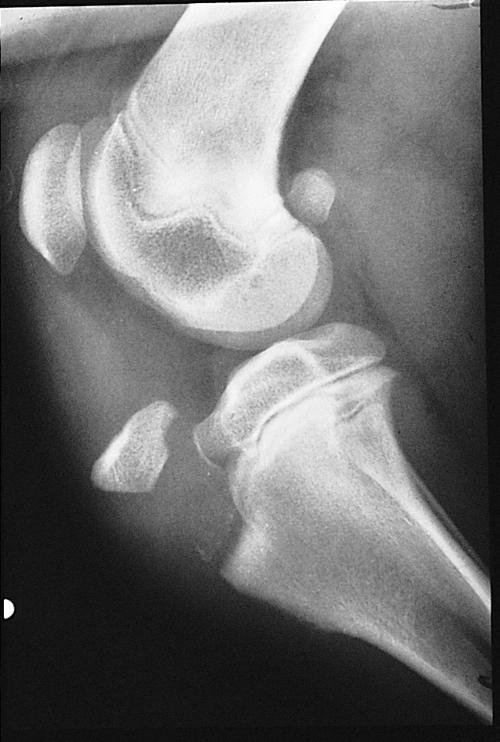Small Animal Emergency and Critical Care Medicine Q&A 19
A male Rottweiler, four months old, was presented to the emergency service. The physical examination was normal but the orthopedic examination revealed a non-weightbearing lameness of the right hindleg. Palpation of the right hindleg revealed pain in the knee joint, but the knee itself had no increase in drawer motion and there was no crepitation. No joint effusion could be seen or palpated.
| Question | Answer | Article | |
| What is the radiological interpretation? | Avulsion of the tibial crest. |
Link to Article | |
| How can you confirm the diagnosis? | Try to elicit painful palpation on extension of the stifle; soft tissue swelling and crepitus might be present. If the displaced tibial crest is located above the proximal tibial epiphyseal plate an avulsion can usually be diagnosed without additional x-rays. If the findings are not clear, compare x-rays of the contralateral side. |
Link to Article | |
| Surgical repair is indicated. Why? | The tibial crest is the insertion of the straight patellar tendon and therefore the insertion of the quadriceps apparatus. A partial loss of function is present with avulsion of the insertion. The extension of the leg is particularly limited without proper fixation of the tibial crest. |
Link to Article | |
| What is the postoperative management? Describe the long-term problems with this diagnosis. | Because of the ‘minimal fixation’ devices used to keep the avulsed crest at its physiological position, it is necessary to restrict movement of the leg with a Robert Jones bandage for at least 10 days. Interference with normal epiphyseal growth is possible especially if the fixation devices are not removed shortly after healing is evident. The animal should be fully weightbearing and should be free of pain on palpation before implants can be removed. |
Link to Article | |
